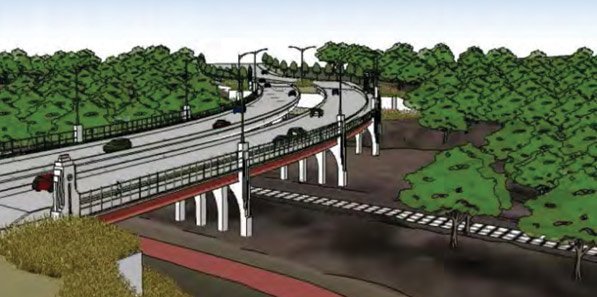For more than 20 years there has been discussion about constructing an overpass on 180th Street spanning the Old Lincoln Highway, the Union Pacific railroad line and the West Papillion Creek, thus connecting a quarter mile break in 180th Street. This talk is now a lot closer to reality.
According to Douglas County engineer Tom McDonald, most of the preliminary approvals from the EPA, US Army Corps of Engineers and other Federal, State and City agencies have been processed and obtained. There are still final approvals required, but the County is now in position to begin the design and scheduling for the project. Kirkham Michael Engineering has been hired to design the overpass.
When completed, 180th Street will span from Ida Street south into Sarpy County, providing a major north-south thoroughfare across the Metro area. It is also expected to relieve congestion on 168th Street and 192nd Street.
The project will be completed in two stages. Phase I will widen 180th Street to four lanes and relocate and span the area over the railroad tracks, West Papillion Creek and Old Lincoln Highway. It will begin at about HWS Cleveland Boulevard and extend north to Blondo Street. This phase is scheduled to begin in early 2019, and be completed in late 2020.
The second phase will widen 180th to four lanes from Blondo to Maple. This work is scheduled to begin in late 2020, and be completed by the end of 2021. The total projected cost for both phases is $41 million.
The overpass will consist of two parallel bridges. Since the Old Lincoln Highway is listed on the National Register of Historic Places, the overpass is being designed to include period aesthetics consistent with the historic character of the highway. Also included in the project is the completion and extension of the 180th Street bike trail.
When completed, we expect the overpass to spur growth along the 180th Street corridor to the north from Dodge Street. There is already development underway and more in the planning stages, but the completion of the overpass connecting north and south across the city will make this area much more attractive for commercial development.
This article appeared in our quarterly newsletter from March of 2016. The full newsletter is available at http://files.investorsomaha.com/download/online_newsletter_3-2016.pdf

